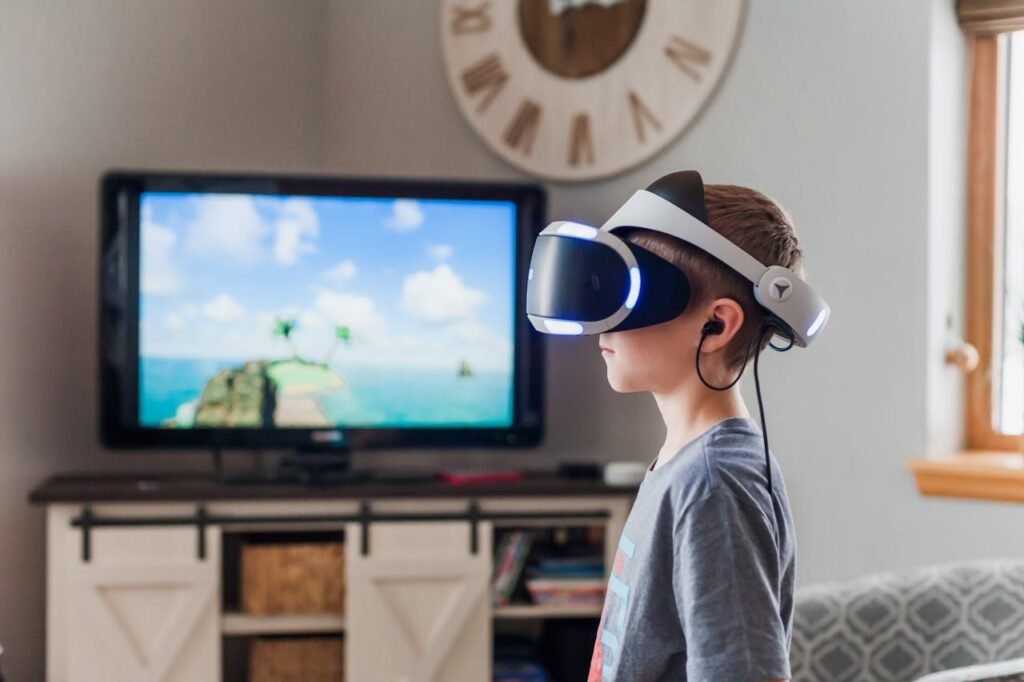Learning to use a prosthetic limb is a journey. It takes time, patience, and practice to build confidence and master movement. But thanks to Augmented Reality (AR) and Virtual Reality (VR), this journey is about to become easier, faster, and more effective.
For years, prosthetic users have relied on traditional rehabilitation methods, which often involve repetitive exercises in clinical settings. But AR and VR are changing the game, offering interactive, immersive, and personalized training programs. These technologies allow users to practice movements in virtual environments, receive real-time feedback, and build muscle memory in a fun and engaging way.
At Robobionics, we believe in making prosthetics more intuitive and accessible. With innovations like Grippy™—our advanced bionic hand—and gamified rehabilitation programs, we ensure that users adapt to their prosthetics with ease. In this article, we’ll explore how AR and VR are transforming prosthetic training and what exciting advancements we can expect by 2030.
1. How Virtual Reality (VR) Is Making Prosthetic Training Easier
Virtual Reality (VR) allows users to enter a simulated environment where they can interact with digital objects, practice movements, and improve coordination. Instead of learning in a clinical setting, users can train in real-life scenarios without physical risks.
In VR-based prosthetic training, users wear a VR headset that immerses them in a 3D world where they can practice gripping, walking, or fine motor movements. The system tracks their actions and provides instant feedback, helping them adjust their technique. This method is particularly useful for new prosthetic users, who often struggle with coordination and muscle control.
By 2030, AI-powered VR simulations will create personalized training experiences based on a user’s unique movement patterns. These systems will adapt in real-time, adjusting difficulty levels, movement exercises, and even virtual environments to match the user’s progress. This will make prosthetic training more effective and enjoyable, reducing frustration and improving long-term results.
2. Augmented Reality (AR): A New Way to Guide Prosthetic Users
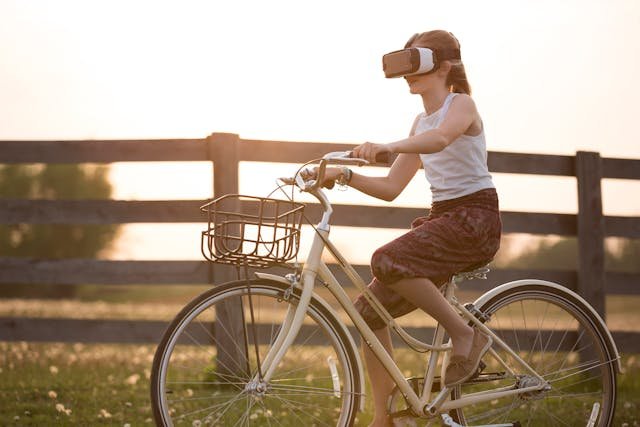
Augmented Reality (AR) blends digital elements with the real world, providing real-time instructions, overlays, and movement guidance. Unlike VR, which creates a completely virtual space, AR enhances the user’s real environment with holographic training aids.
For example, a user wearing AR smart glasses can see virtual hand movements overlaid on their prosthetic limb, showing them exactly how to position their fingers for a precise grip. AR apps can also project visual step-by-step guides onto a user’s surroundings, helping them practice complex motions like opening a bottle or holding a delicate object.
By 2030, AR technology will be even more advanced, with AI-driven motion analysis and real-time muscle tracking. This means that AR-based prosthetic training will be able to detect small movement errors, provide instant corrections, and even predict potential strain or fatigue, making adaptation smoother and safer.
3. Gamified Rehabilitation: Making Prosthetic Training Fun and Engaging
One of the biggest challenges in prosthetic training is keeping users motivated. Traditional rehab exercises can feel repetitive and boring, leading to frustration and slow progress. Gamified rehabilitation—powered by AR and VR—is changing this by turning training into an interactive and rewarding experience.
In a VR-based game, a user could be tasked with picking up virtual objects, stacking blocks, or even playing a simulated piano. These exercises help users develop fine motor skills, grip strength, and coordination without feeling like they are doing therapy. Each level gets slightly more challenging, keeping the user engaged and pushing them to improve their skills naturally.
By 2030, fully personalized, AI-powered rehabilitation games will be available, adapting to a user’s progress and specific needs. These games will also sync with prosthetic sensors, allowing real-time motion tracking and feedback, making training more effective and enjoyable.
4. VR for Lower-Limb Prosthetic Users: Mastering Balance and Walking
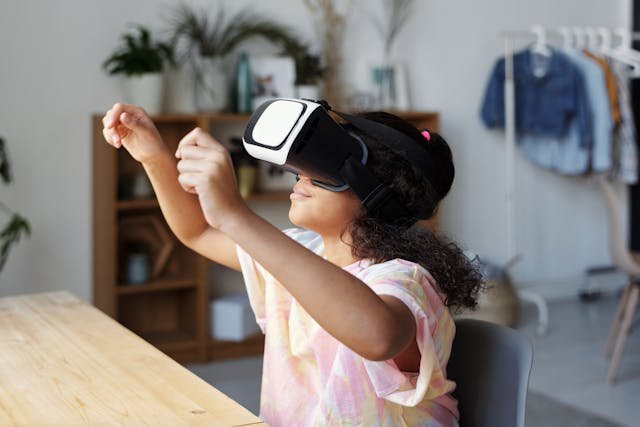
For individuals using leg prosthetics, learning to walk with confidence requires balance training, coordination exercises, and real-world practice. VR is making this process much safer and more controlled by simulating various walking environments without real-world risks.
In a VR-based walking program, users can practice walking on different terrains—like sand, stairs, or uneven pavement—without the fear of falling. The system analyzes their gait, posture, and weight distribution, providing instant corrections to improve stability and efficiency.
By 2030, AI-powered VR walking simulations will offer hyper-realistic environments, allowing users to train for everyday scenarios—like crossing a busy street or walking in a crowded mall. These advancements will give users greater independence and confidence, ensuring they can navigate the world with ease.
5. AR-Powered Smart Prosthetics: Real-Time Feedback for Better Control
Future prosthetics will be equipped with AR-powered smart displays that provide real-time movement guidance. These displays—built into AR smart glasses or smartphone apps—will analyze muscle signals, grip pressure, and movement precision, offering instant feedback on how to improve prosthetic control.
For example, a bionic hand user trying to hold a delicate object could see an AR overlay showing optimal grip force to prevent dropping or crushing it. For leg prosthetics, an AR-based walking guide could help users adjust stride length and posture, improving overall stability.
By 2030, these AR-powered training assistants will be integrated with prosthetic AI systems, allowing users to receive live coaching and performance tracking. This will reduce the learning curve, improve accuracy, and enhance comfort during daily activities.
6. Using VR for Phantom Limb Pain Management
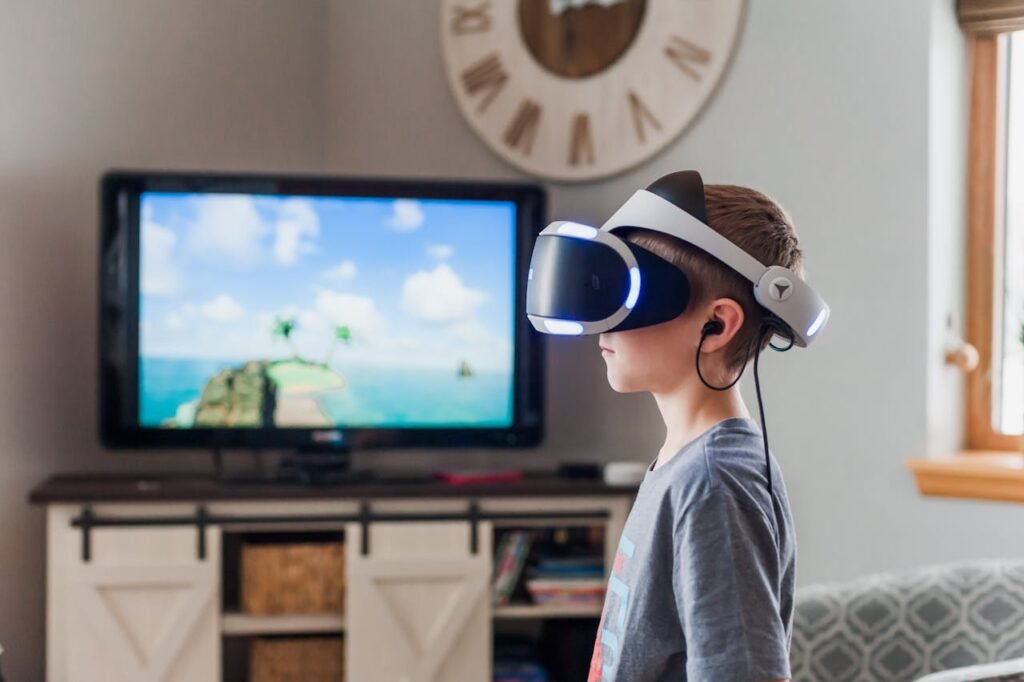
Many amputees experience phantom limb pain, where they feel discomfort or pain in a limb that is no longer there. VR is proving to be an effective tool in reducing this pain by creating immersive visual feedback that tricks the brain into thinking the missing limb is still present.
In a VR therapy session, users can see and control a virtual version of their missing limb, performing movements that help rewire the brain’s pain signals. Over time, this training can reduce phantom limb pain and improve overall comfort.
By 2030, AI-driven VR therapy sessions will be customized for each user’s unique pain patterns, providing more effective and long-lasting relief. This will make VR a standard part of prosthetic rehabilitation, improving quality of life for countless users.
7. The Future of AR and VR in Prosthetic Clinics and Home Training
One of the biggest advantages of AR and VR is that they will allow users to train anywhere—whether at a clinic or at home. Future AR/VR prosthetic training systems will be accessible via smartphones, AR glasses, and wireless VR headsets, eliminating the need for frequent clinic visits.
At Robobionics, we are working towards gamified home-based prosthetic training, ensuring that users can build skills and confidence from the comfort of their homes. By 2030, AI-driven virtual prosthetic coaches will provide personalized guidance, track progress, and offer real-time corrections, making home-based training as effective as in-clinic therapy.
8. AI-Driven Personalization: Tailoring AR and VR Training for Each User
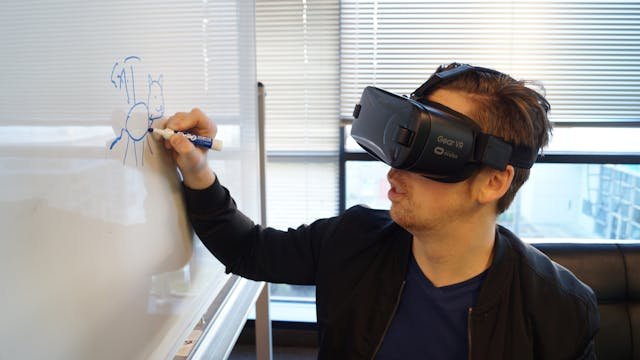
No two prosthetic users are the same—each person has unique movement patterns, muscle strength, and learning speed. This is where AI-powered personalization will revolutionize AR and VR prosthetic training.
Future training programs will use AI to analyze a user’s movements, tracking grip force, walking gait, and muscle signals to create a customized learning experience. If a user struggles with a specific movement, AI will adjust exercise difficulty, repetition, or provide alternative techniques in real-time.
By 2030, prosthetic users will have access to fully personalized AR/VR training environments, where exercises adapt automatically based on progress. This will reduce frustration, speed up adaptation, and ensure better long-term success with prosthetic use.
9. The Role of Haptic Feedback in VR Prosthetic Training
One of the biggest challenges in prosthetic training is the lack of sensory feedback. Traditional prosthetics do not provide a sense of touch, temperature, or pressure, making it harder for users to judge force and positioning.
VR is solving this problem with haptic feedback gloves and wearables, which simulate the feeling of gripping objects, sensing textures, and detecting weight differences. These devices use vibration, pressure pads, and electrical stimulation to create a realistic sense of touch, helping users develop better motor control.
By 2030, VR prosthetic training will integrate full-body haptic suits, allowing users to feel their virtual movements in real-time. This will bridge the gap between artificial limbs and natural sensation, making prosthetic use more intuitive than ever.
10. AR and VR in Pediatric Prosthetic Training
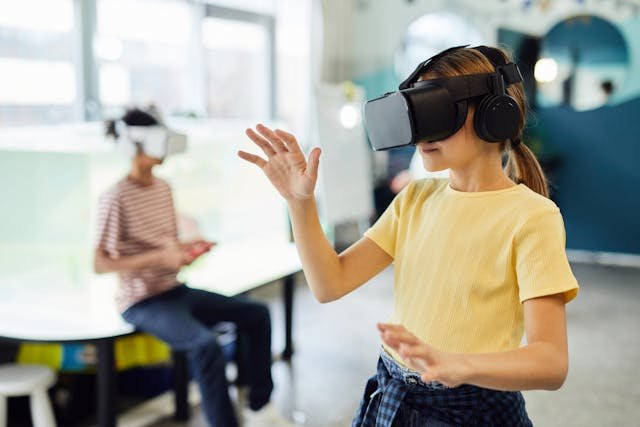
For children using prosthetics, traditional rehabilitation can feel boring, frustrating, or even scary. AR and VR are making prosthetic training more engaging, interactive, and playful, helping children adapt faster while having fun.
In VR-based training, children can enter virtual worlds where they complete missions using their prosthetic limbs—picking up objects in a treasure hunt or playing a virtual sport. This gamified approach keeps them motivated and excited, turning rehabilitation into an enjoyable adventure.
By 2030, AI-driven VR games will adjust difficulty levels and movement challenges based on each child’s growth and learning speed, ensuring they stay engaged while improving prosthetic control. This technology will help young users gain confidence and independence much earlier in life.
11. The Expansion of Remote Prosthetic Training with AR and VR
In many regions, access to specialized prosthetic training centers is limited, making it harder for users to receive hands-on guidance. AR and VR are bridging this gap by allowing remote prosthetic training, connecting users with virtual rehabilitation specialists from anywhere in the world.
Users will be able to attend virtual training sessions with AI coaches, practicing movements in AR-enhanced environments that provide instant feedback and corrections. This will reduce the need for frequent clinic visits, making prosthetic training more accessible and affordable.
By 2030, remote AR and VR training will be widely available, ensuring that any prosthetic user, regardless of location, can receive high-quality rehabilitation and support from the comfort of their home.
12. The Future of Social Integration Through AR and VR Prosthetic Training
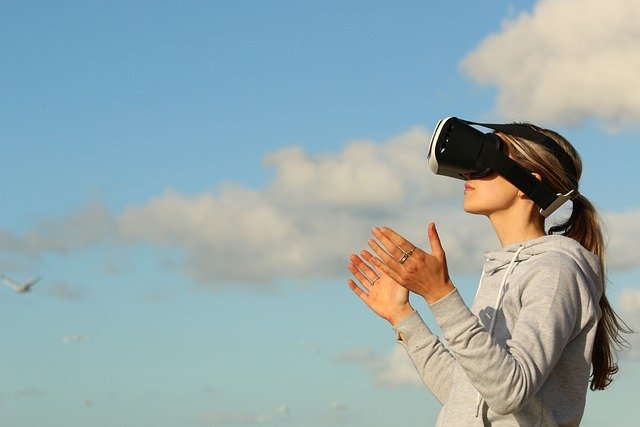
Beyond rehabilitation, AR and VR are also helping prosthetic users build confidence in social settings. Many new users experience self-consciousness, anxiety, or fear when using their prosthetic limbs in public for the first time.
VR social training simulations will allow users to practice daily interactions—like shaking hands, using utensils at a restaurant, or carrying shopping bags—before facing real-world situations. AI-driven AR coaching tools will also provide tips on posture, movement flow, and gestures, helping users feel more natural and confident in social settings.
By 2030, AR and VR will not only improve physical rehabilitation but also enhance emotional well-being, helping users fully embrace their prosthetics as a natural part of their body.
13. AR and VR for Upper-Limb vs. Lower-Limb Prosthetic Training
The challenges of using arm prosthetics vs. leg prosthetics are different, and AR/VR training programs will be designed to meet specific needs for each type.
For upper-limb prosthetic users, AR/VR will focus on precision, grip strength, and dexterity, helping users learn how to control fingers, grasp delicate objects, and adjust grip force automatically. AI-powered simulations will guide users in daily tasks like tying shoelaces, writing, or cooking, helping them gain fluid control.
For lower-limb prosthetic users, AR/VR will simulate different walking terrains, real-world movement scenarios, and balance training, ensuring users gain confidence on stairs, ramps, and uneven surfaces. AI-driven gait analysis will detect imbalances, helping users achieve a natural and comfortable walking pattern.
By 2030, prosthetic training programs will be fully customized for different limb types, ensuring maximum efficiency and user comfort.
14. AR and VR in Prosthetic Technician Training
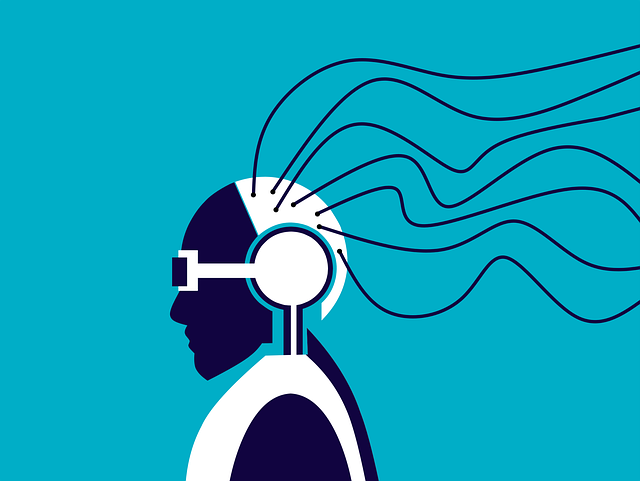
It’s not just prosthetic users who benefit from AR and VR—prosthetists, therapists, and technicians will also use these technologies to improve prosthetic fittings and adjustments.
VR-based training simulations will allow new prosthetists to practice customizing prosthetic limbs, fine-tuning socket fits, and analyzing user biomechanics in a virtual lab environment. AR overlays will provide real-time guidance during fittings, ensuring perfect adjustments based on AI-driven movement analysis.
By 2030, prosthetic clinics will integrate AR and VR into their daily operations, ensuring that every user receives the best possible prosthetic fit and training experience.
15. The Role of AI Chatbots and Virtual Assistants in Prosthetic Training
Future prosthetic training will also include AI-driven virtual assistants, which will act as personal prosthetic coaches. These assistants—available through smartphones, AR glasses, or VR headsets—will provide on-demand guidance, answer questions, and track progress.
For example, if a user is struggling with grip control, an AI assistant can analyze muscle signals in real-time and suggest adjustments or new training exercises. This will allow users to practice efficiently without needing constant in-person supervision.
By 2030, AI-powered virtual prosthetic assistants will be as common as fitness trackers, providing real-time insights, encouragement, and continuous learning opportunities.
Final Thoughts: A Future Where Prosthetic Training Is Effortless and Engaging
AR and VR are revolutionizing prosthetic training, making it faster, easier, and more enjoyable. These technologies will enhance rehabilitation, improve movement control, and reduce phantom limb pain, giving users greater independence and confidence.
At Robobionics, we are committed to integrating cutting-edge technology into prosthetic solutions like Grippy™, ensuring that users get the best possible training experience.
If you or a loved one is looking for next-generation prosthetic solutions, book a free demo with Robobionics today and take the first step toward a smarter, more intuitive training experience!



